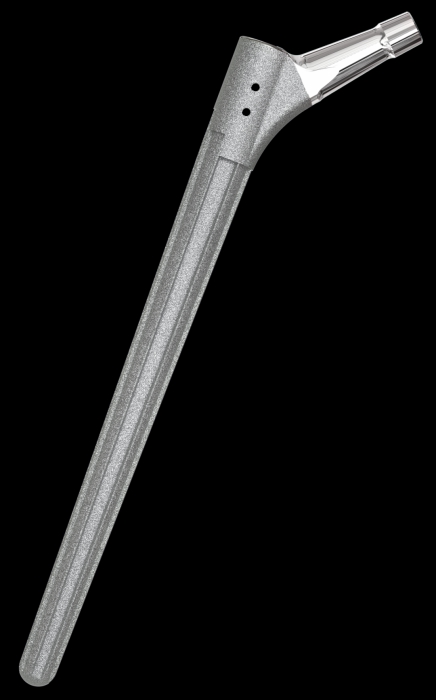At present, with the increasing number of primary hip replacements, the number of hip revision surgeries is also increasing. In the face of this situation, it is extremely important to choose a prosthesis that can really solve the problem of hip revision.
For hip revision surgery, Just strongly recommends this RSL revision femoral stem, which is a "renovating artifacts" that can truly meet clinical needs!
Product design features
2° taper design
RSL revision femoral stem adopts a 2° tapered stem design. In terms of long-term stability, conical stalks are more effective than cylindrical stalks at the proximal end of the femur stalk for osseointegration, which reduces the likelihood of femur stalk loosening and postoperative thigh pain. Robert d. Russell mentioned in his paper The Journal of Arthroplasty that a 2° conical handle has better initial fixation stability than a cylindrical one when there is only 3cm complete bone loss at the femoral isthmus.

8 longitudinal ridge design
8 sharp longitudinal ridges can be anchored in the cortical bone close to 0.1-0.5 mm to provide stable anti-rotation stability; there is a space between each ridge, which is conducive to the regeneration of blood vessels in the cancellous bone and accelerates the reconstruction of the medullary cavity; For the same outer diameter, the 8 ridge design can reduce the thickness of the handle body, thereby reducing the rigidity and avoiding the looseness and thigh pain caused by stress shielding; the 8 ridge design can increase the contact area with the bone surface (similar to a tapered thread Connection), which is conducive to the stability of the handle body and the effect of osseointegration.
Integrated rough surface
The integrated design avoids the risk of fracture at the joints of the prosthesis. The voids on the rough surface provide space for bone length, and the formed microstructure will affect the mechanical transmission effect, form a discontinuous load transfer effect, and promote osseointegration.
Circular cross-section design
The RSL stem is conical as a whole, so its cross-section is round, and the anterior angle can be adjusted during the operation to facilitate the doctor's operation and restore the patient's physiological force line; the conical stem has no edges, which reduces the stress on the edges around the stem The risk of intraoperative or postoperative bone splitting caused by concentration.
Copyright:@2020-2021
Comments Please sign in or sign up to post.
0
0 of 500 characters used